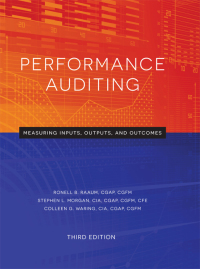Required information The following information applies to the questions displayed below. Rick, who is single, has been offered a position as a city landscape consultant. The position pays $125,000 in cash wages. Assume Rick has no dependents. Rick deducts the standard deduction instead of itemized deductions and he is not eligible for the qualified business income deduction (Use the tax rate schedules.) a. What is the amount of Rick's after-tax compensation (ignore payroll taxes)? (Round your intermediate calculations and final answer to the nearest whole dollar amount.) Amount Description (1) Gross income (2) For AGI deductions (3) Adjusted gross income (4) Standard deduction (5) Taxable income (6) Income tax liability After-tax compensation Check my WOTR Required information [The following information applies to the questions displayed below.) Rick, who is single, has been offered a position as a city landscape consultant. The position pays $125,000 in cash wages. Assume Rick has no dependents, Rick deducts the standard deduction instead of itemized deductions and he is not eligible for the qualified business income deduction (Use the tax rate schedules.) b-1. Suppose Rick receives a competing job offer of $120,000 in cash compensation and nontaxable (excluded) benefits worth $5,000. What is the amount of Rick's after-tax compensation for the competing offer? (Round your intermediate calculations and final answer to the nearest whole dollar amount.) Amount Description (1) Gross income (2) For AGI deductions (3) Adjusted gross income (4) Standard deduction (5) Taxable income (6) Income tax liability Total after-tax compensation Individuals Schedule X-Single If taxable income is over: But not over: The tax is: $ 0 $ 9,700 10% of taxable income $ 9,700 $ 39,475 $970 plus 12% of the excess over $9,700 $ 39,475 $ 84,200 $4,543 plus 22% of the excess over $39,475 $ 84,200 $160,725 $14,382.50 plus 24% of the excess over $84,200 $160,725 $204,100 $32,748.50 plus 32% of the excess over $160,725 $204,100 $510,300 $46,628.50 plus 35% of the excess over $204,100 $510,300 $153,798.50 plus 37% of the excess over $510,300 Schedule Y-1-Married Filing Jointly or Qualifying Widow(er) If taxable income is over: But not over: The tax is: $ 0 $ 19,400 10% of taxable income $ 19,400 $ 78,950 $1,940 plus 12% of the excess over $19,400 $ 78,950 $168,400 $9,086 plus 22% of the excess over $78,950 $168.400 $321,450 $28,765 plus 24% of the excess over $168,400 $321,450 $408,200 $65,497 plus 32% of the excess over $321,450 $408,200 $612,350 $93,257 plus 35% of the excess over $408,200 $612,350 - $164,709.50 plus 37% of the excess over $612,350 Schedule Z-Head of Household If taxable income is over: But not over: The tax is: $ 0 $ 13,850 10% of taxable income $ 13,850 $ 52,850 $1,385 plus 12% of the excess over $13,850 $ 52,850 $ 84,200 $6,065 plus 22% of the excess over $52,850 $ 84,200 $160,700 $12.962 plus 24% of the excess over $84,200 $160,700 $204,100 $31,322 plus 32% of the excess over $160, 700 $204,100 $510,300 $45,210 plus 35% of the excess over $204,100 $510,000 - $152,380 plus 37% of the excess over $510,300 Schedule Y-1.Married Filing Jointly or Qualifying Widow(er) If taxable income is over: But not over: The tax is: $ 0 $ 19.400 10% of taxable income $ 19,400 $ 78,950 $1,940 plus 12% of the excess over $19,400 $ 78,950 $168,400 $9,086 plus 22% of the excess over $78,950 $168.400 $321,450 $28,765 plus 24% of the excess over $168,400 $408,200 $65,497 plus 32% of the excess over $321,450 $408,200 $612,350 $93,257 plus 35% of the excess over $408,200 $612,350 - $164,709.50 plus 37% of the excess over $612,350 Schedule Z-Head of Household If taxable income is over: But not over: The tax is: $ 0 $ 13,850 10% of taxable income $ 13,850 $ 52,850 $1,385 plus 12% of the excess over $13,850 $ 52,850 $ 84,200 $6,065 plus 22% of the excess over $52,850 $ 84,200 $160,700 $12,962 plus 24% of the excess over $84,200 $160,700 $204,100 $31,322 plus 32% of the excess over $160,700 $204,100 $510,300 $45,210 plus 35% of the excess over $204,100 $510,000 - $152,380 plus 37% of the excess over $510,300 Schedule Y-2-Married Filing Separately If taxable income is over: But not over: The tax is: $ 0 $ 9,700 10% of taxable income $ 9,700 $ 39,475 $970 plus 12% of the excess over $9,700 $ 39,475 $ 84,200 $4,543 plus 22% of the excess over $39,475 $ 84,200 $160,725 S14,382.50 plus 24% of the excess over $84,200 $160,725 $204,100 $32,748.50 plus 32% of the excess over $160,725 $204,100 $306,175 $46.628.50 plus 35% of the excess over $204,100 $306,175 $82,354.75 plus 37% of the excess over $306,175 Through November, Cameron has received gross income of $120,000. For December, Cameron is considering whether to accept one more work engagement for the year. Engagement 1 will generate $7,000 of revenue at a cost to Cameron of $3,000, which is deductible for AGI. In contrast, engagement 2 will generate $5,000 of qualified business income (QBI), which is eligible for the 20% QBI deduction. Cameron files as a single taxpayer. Calculate Cameron's taxable income assuming he chooses engagement 1 and assuming he chooses engagement 2. Assume he has no itemized deductions Answer is not complete. Description Engagement Engagement (1) $ Gross income before new work engagement Income from engagement Additional for AGI deduction Adjusted gross income Greater of itemized deductions or standard deduction Deduction for QBI Taxable income 120,000 7,000 3,000 124,000 120,000 5,000 0 125,000 S (6) 0











